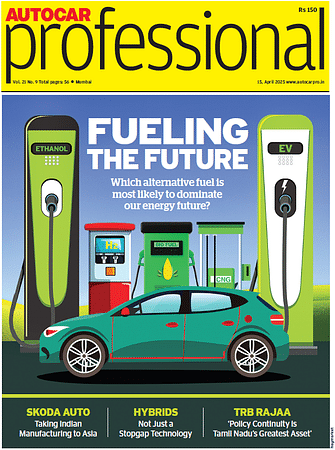Passenger Vehicle Retail Sales Rebound in March, Breaking Months-Long Slump
Despite a sales recovery in March 2025, inventory levels remain elevated, highlighting ongoing supply management challenges.
In a welcome sign for India's automotive sector, passenger vehicle (PV) retail sales registered an impressive 6.26% year-over-year growth in March 2025, reaching 350,603 units compared to 329,946 units in March 2024, according to data released by the Federation of Automobile Dealers Associations (FADA).
The March growth represents a significant turnaround after months of subdued performance in the PV segment. February 2025 had witnessed a steep decline of 10.34% year-over-year, while January's numbers, although positive with a 15.53% growth, were inflated due to registrations spilling over from December purchases for "2025 model year" advantages.
An analysis of monthly growth data over the past year reveals significant volatility in the PV market. The sector experienced wild swings from a high of 32.38% growth in October 2024 to a concerning 18.81% decline in September. This roller-coaster pattern reflects the challenging market conditions facing automakers and dealers, with seasonal factors, inventory pressures, and economic uncertainties creating an unpredictable sales environment.
"The PV segment benefited from discounting, forthcoming price hikes, and festive buying," said Mr. C.S. Vigneshwar, FADA President. "New model launches and better variant availability also aided growth."
The month-on-month improvement was even more pronounced, with March registrations jumping 15.56% compared to February 2025, signaling strengthening consumer demand. This positive momentum comes after a particularly challenging period for the segment, which saw consistent declines in the latter part of 2024, including a concerning 18.81% drop in September.
Inventory Concerns Persist
Despite the positive sales figures, FADA continues to highlight inventory challenges in the PV segment. Dealer stock levels, while improving from their peak of 70-75 days in August-September 2024, still remain elevated at 50-55 days. "Many dealers highlighted unrealistic targets, liquidity challenges, and regional pockets of low demand, resulting in PV inventories rising," noted Vigneshwar.
Industry analysts suggest that while March's performance is promising, sustained recovery will depend on OEMs (original equipment manufacturers) managing supply more prudently.
Market Leader Dynamics
Maruti Suzuki maintained its dominance with a 37.77% market share in March, though this represented a slight decrease from its 38.94% share in the same month last year. Tata Motors and Mahindra & Mahindra both strengthened their positions with 13.82% and 13.20% market shares respectively, while Hyundai Motor India saw its share decline to 12.13% from 13.50% a year earlier.
Toyota Kirloskar Motor continued its upward trajectory, increasing its market share to 6.65% from 5.98% in March 2024, underscoring the growing consumer preference for SUVs and premium offerings.
Rural vs. Urban Performance
A notable trend in the PV segment has been the stronger growth in rural markets compared to urban centers. For the fiscal year 2025, rural PV sales grew by 7.93%, significantly outpacing the 3.07% growth seen in urban areas. This shift highlights the expanding market beyond metropolitan regions and suggests improving economic conditions in rural India.
Outlook for FY26
Looking ahead, FADA anticipates low single-digit growth for the PV segment in the new fiscal year. While new model launches and strategic marketing initiatives are expected to provide some momentum, concerns persist about subdued consumer sentiment and financing challenges.
The industry body also flags the potential impact of the global tariff war, which could trigger stock market volatility and affect discretionary spending. Moreover, upcoming price hikes from OBD-2B norms might further strain consumer budgets.
As the sector steps into FY26, the March performance offers a glimmer of hope, but stakeholders remain cautiously optimistic, emphasizing the need for better inventory management and alignment between OEM targets and market realities.
RELATED ARTICLES
JBM Electric Vehicles Forms Strategic Partnership with Hitachi ZeroCarbon
The collaboration aims to enhance battery performance in electric buses through data analytics, potentially lowering ope...
STMicroelectronics Introduces Extensible Memory Solution for Automotive Microcontrollers
Stellar's xMemory technology is designed to meet increasing memory requirements in software-defined vehicles and electri...
Exclusive: BorgWarner Expands Electric Drive Motor Portfolio with Advanced Technology Solutions
Hairpin and S-winding technologies aim to contribute to efficiency and power density improvements in electric and hybrid...






 By Shruti Shiraguppi
By Shruti Shiraguppi
 07 Apr 2025
07 Apr 2025
 1550 Views
1550 Views





 Angitha Suresh
Angitha Suresh




